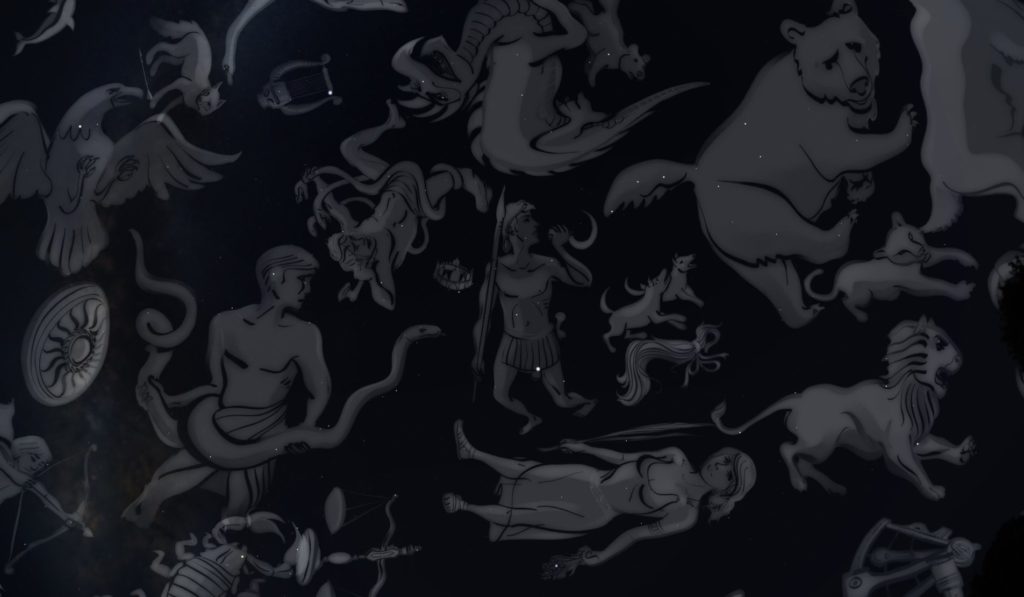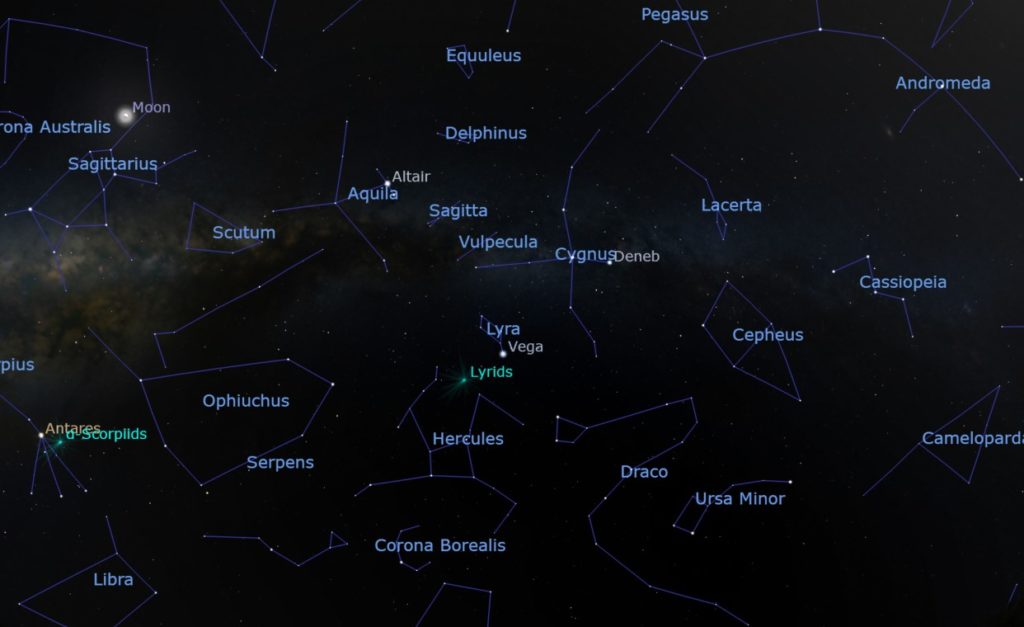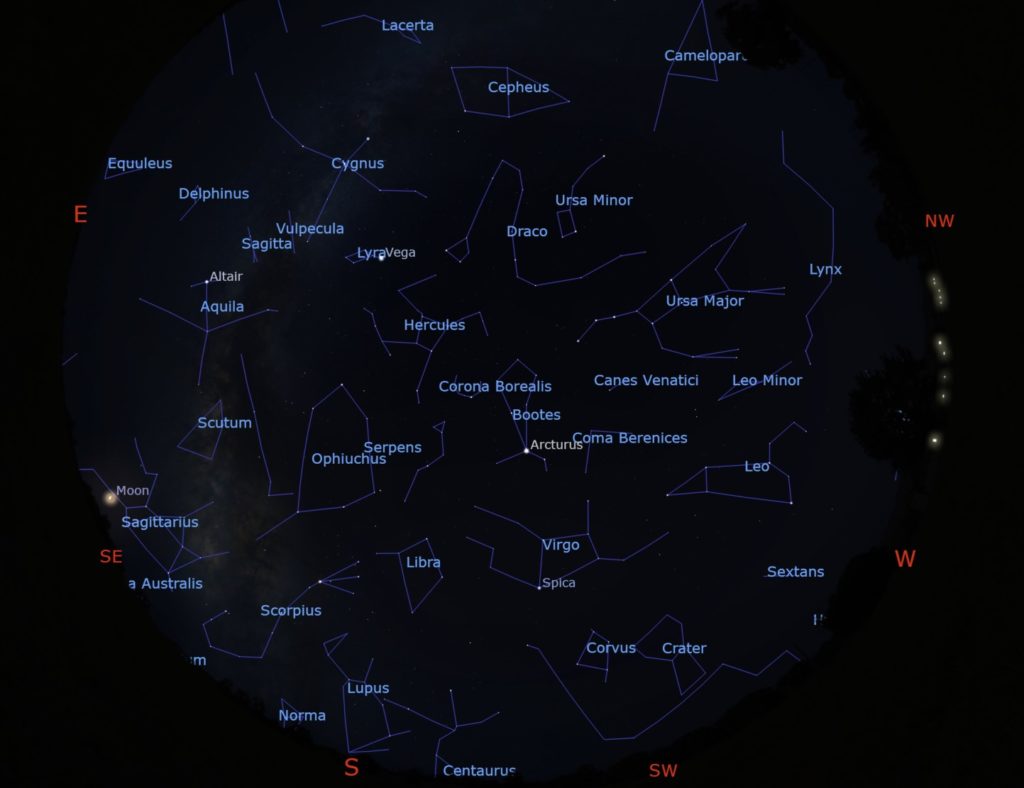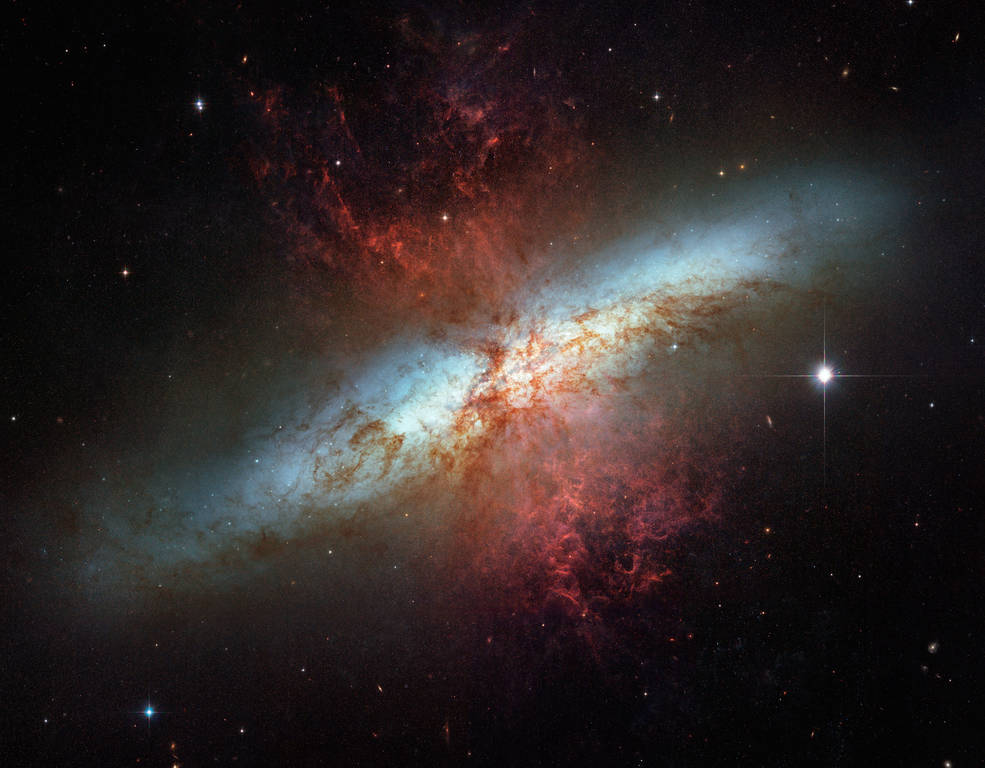
April will bring some meteor showers, constellations galore, and—galactic cannibalism?! Get into the spring spirit and read on to learn about the space objects that will be lighting up the night sky this month.
Planets
Mercury is moving from Pisces to Taurus. It may be visible right after sunset with a clear western horizon for the last few days of the month. Venus is moving from Capricornus to Pisces and will be visible in the east before dawn all month. Mars will move from Capricornus to Aquarius and will also be visible in the eastern sky before sunrise. Jupiter will move from Aquarius to Pisces. It’ll be too close to the sun to see for most of the month, but towards the end of April it may be visible in the eastern sky before dawn. Saturn will be in Capricornus and will also be visible just before dawn near the eastern horizon. The ice giants Uranus and Neptune will be too close to the Sun to see this month.
There will be a conjunction between Venus and Jupiter on April 30, meaning they’ll appear to be very close to each other in the night sky. They’ll be within about half a degree of each other, or half a finger width at arms length apart. This will be visible near the eastern horizon just before dawn. There will also be a conjunction between the Moon and Saturn on April 24. You can see them with your naked eye near the eastern horizon in the morning sky!
The Moon
We’ll be having a rare double new Moon month on April 1 and the 30th, and the full Moon this month will be on April 16.
Meteor Showers
There are a few meteor showers visible this month. The Lyrid meteor shower will originate from the constellation Lyra and will peak on April 22nd. It’s predicted to produce around 10 meteors an hour. The Pi-Puppid meteor shower is a weaker meteor shower that will peak on April 24th, radiating from the constellation Puppis. The radiant will be pretty close to the southern horizon from flagstaff, so they’re best viewed from farther south, but 5-10 meteors an hour may be visible from most of the US. The Eta Aquarids are a stronger meteor shower that will peak in early May, but some meteors will be visible starting in late April.
Constellations

The Winter Hexagon containing some of the sky’s brightest stars is rapidly leaving the sky, and will be nearly gone from the night sky by the end of the month. The spring constellations are prominent in the sky, including Ursa Major, Leo containing the star Regulus, Bootes containing Arcturus, and Virgo with her bright star Spica. You can follow the arc of the Big Dipper’s handle to “arc to Arcturus” and continue along that line to “spike to Spica.” The summer constellations will start peaking up above the eastern horizon early in the night. This includes constellations like Hercules following Bootes, Scorpius in the southern sky, and The constellations making up the summer triangle. This includes the star Vega in Lyra, Deneb in Cygnus and Altair in Aquila.
Deep Sky Objects

Those with telescopes can see dozens of galaxies and globular star clusters this month, but here are some of our favorites! Bode’s and Cigar galaxies are so close together in our night sky that you can see both of them in one field of view. If you take the stars Phecda and Dubhe in the Big Dipper, and continue along the line they create the same distance they are apart, you’ll run into the galaxies. The Whirlpool Galaxy, or M51 is one of my top 5, maybe top 3 favorite objects in the entire night sky. We’re seeing galactic cannibalism 30 million light years away, where the larger galaxy here is basically consuming the smaller galaxy.

If you take the end of the big dipper’s handle, Mizar and Alkaid, and make a right angle to the southwest of alkaid for about three degrees, or about the width of two fingers in the sky, you’ll hit M51. With a medium sized telescope you may be able to see the spiral structure of the galaxy. The Sombrero Galaxy, or M104,can be found by making a line between the brightest star in virgo, Spica, and one of the corner stars in corvus, Algorab, and then go about 2 finger widths, or 4 degrees north. If you make a line between the star Denebola in Leo to Vindemiatrix in Virgo, the chain of galaxies known as Markarian’s chain will be located in the center.